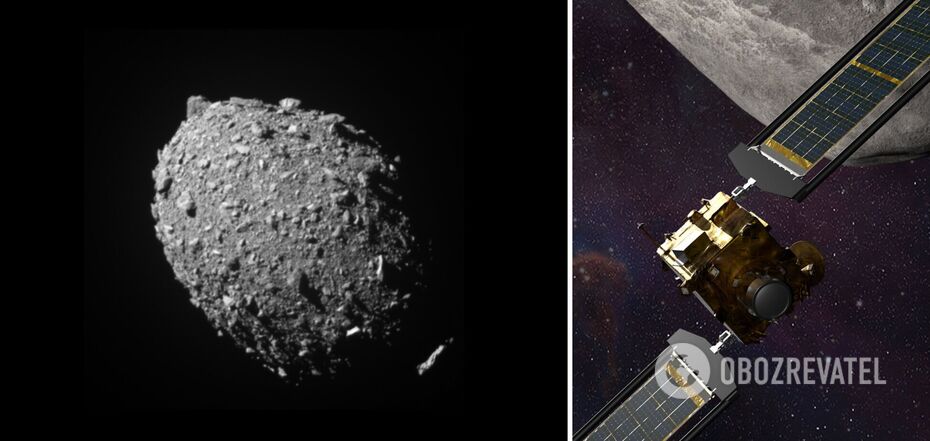Life
NASA rammed an asteroid for the first time in human history: historic video of the collision
The DART mission, in which NASA engineers planned to ram a space probe into the asteroid Dimorphos, was successful. The device collided with the surface of the space body, which was called the world's first demonstration of planetary defence.
As reported by NASA, the collision took place exactly as planned - at 2:14 am on September 27, Kyiv time. The mission was broadcast live to see the video of the decisive moment, scroll down to the bottom of the page.
DART is part of NASA's overall planetary defence strategy - the US agency, together with international partners, is working on ways to avert the threat of a large asteroid impact. Approximately 66 million years ago, such a cataclysm probably led to the death of the dinosaurs, and now the asteroid threat is considered a likely scenario for the destruction of humanity. In the future, scientists plan to use similar missions to deflect the trajectories of dangerous celestial bodies from Earth's orbit.
"At its core, DART is an unprecedented success in planetary protection, but it is also a mission of unity with real benefits for all of humanity," NASA Administrator Bill Nelson said following the collision. He reminded that the Earth is our common home and the agency's experts are working together with colleagues from around the world to protect it. "This international collaboration has turned science fiction into science fact, demonstrating one way to protect the Earth," Nelson added. The scientists said they were proud of the way they were able to precisely aim the spacecraft at the asteroid's surface, adjusting its flight as it approached the target using the built-in thrusters.
Now the researchers will study whether the probe managed to knock Dimorphos out of its orbit around a larger asteroid called Didymos. According to calculations, the impact should have reduced the orbit of the smaller object by 1%, or about 10 minutes. This is being monitored by the miniature LiciaCube satellite, which was flying with DART and stopped about 50 km from the impact site.
As reported, Dimorphos is 160 metres across and Didymos is 780 metres across. NASA's smaller asteroid was attacked by a 570 kg probe. It is expected that the period of orbit of Dimorphos around Didymos will be reduced from 1 hour 55 minutes to 1 hour 45 minutes. Data that will help determine whether the asteroid's orbit has been changed will begin to flow from LiciaCube in about a few days.
As reported by OBOZREVATEL, scientists have calculated how the "end of the world" caused by the asteroid hitting the Earth may look like.



























